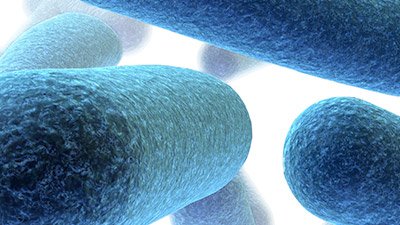
The "Arms Race" of Bacteria
ScienceDaily: “How Pathogens Evolve to Escape Detection”
Evolution is one of those amazingly versatile words that can be bent and warped to mean whatever one wants it to mean. To many scientists, abiogenesis (the spontaneous generation of life from nonliving matter billions of years ago) equals evolution; natural selection equals evolution; artificial selection equals evolution; and, also, mutation/loss of genetic information over time equals evolution. In fact, one wonders if including the word evolution is a prerequisite for publication in many secular journals—whether it adds anything to the research or not.
The problem with such warping and twisting is that it obscures which parts of the research are real, scientific observations and which parts of the research are biased assumptions about the past. Any reader, whether Christian or not, should learn to pick apart the issue to see which is which. Let’s take a closer look at a recent example.
Evolution is one of those amazingly versatile words that can be bent and warped to mean whatever one wants it to mean.
Researchers at Cornell University’s Boyce Thompson Institute have been studying how the bacterium Pseudomonas syringae “infects tomatoes by injecting a special protein into the plant’s cells and undermines the plant’s defense system.” (So far, so good—these are repeatable observations.) The article continues:
“Plant breeders often find that five or six years after their release, resistant plant varieties become susceptible because pathogens can evolve very quickly to overcome plant defenses,” said Gregory Martin, Cornell professor of plant pathology [...]. “However, every now and then, breeders develop a plant variety that stays resistant for 20 years or more.”
That first sentence contains one of the “buzzwords” any astute reader should watch out for: because. One can certainly observe the amount of time a plant is resistant to a particular pathogen. The plant breeders artificially select certain genes for their resistant qualities, though even these varieties become susceptible in only a short time. However, the cause of that susceptibility is based on speculation—not observation. The researchers admit this later in the article:
The researchers found that the Fen gene is present in both cultivated tomatoes and many wild tomato species, leading them to believe that the gene is likely ancient in origin and that many members of the tomato family have used it to resist P. syringae [sic] infections over the years. Since the Fen protein still detects AvrPtoB-like proteins from some strains of P. syringae [sic], prompting an effective immune response, the researchers believe new P. syringae [sic] strains have only recently evolved a version of AvrPtoB that includes an E3 ubiquitin ligase enzyme that interferes with the plant’s surveillance.
Based on their prior expectations about the origin of life, they believe that this denotes an “arms race.”
What was observed? The Fen gene (the gene that protects the plants from the bacteria) is present in tomato plants in the wild and the ones that were artificially selected. In fact, this Fen gene still detects some strains of P. syringae—though not all strains—whatever the type. Then, however, we run into another one of those buzzwords: believe. Based on their prior expectations about the origin of life, they believe that this denotes an “arms race.” Basing their conclusions on this belief about the unobservable past, the researchers have put their “best guess” forward as to why this happened, certified it as grade A evolution, and are distributing it as “proof.”
But is this really the only interpretation? First of all, it is important to notice that the Fen gene is already present in the tomato plants (even the researchers think this is evidence that the gene is “ancient in origin”). The problem is that they assume that since the tomato plants are losing immune resistance to P. syringae, that the bacteria must be developing new genetic information to attack the plants.
What they don’t state is how the AvrPtoB protein “evolved.” This has nothing to do with new information arising by chance over millions of years, but everything to do with natural selection on a (much!) shorter timeframe, living in a fallen world.
By the way, not all research on plant defenses is blemished by appeals to the mystical power of evolution.
Remember, if you see a news story that might merit some attention, let us know about it! (Note: if the story originates from the Associated Press, Fox News, MSNBC, the New York Times, or another major national media outlet, we will most likely have already heard about it.) And thanks to all of our readers who have submitted great news tips to us.
(Please note that links will take you directly to the source. Answers in Genesis is not responsible for content on the websites to which we refer. For more information, please see our Privacy Policy.)
Recommended Resources

Answers in Genesis is an apologetics ministry, dedicated to helping Christians defend their faith and proclaim the good news of Jesus Christ.
- Customer Service 800.778.3390
- © 2024 Answers in Genesis





